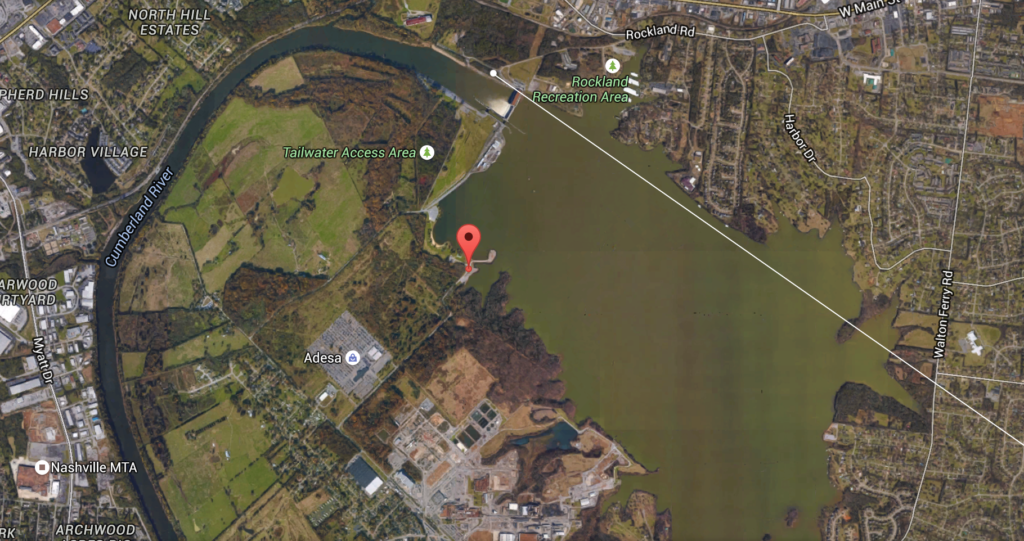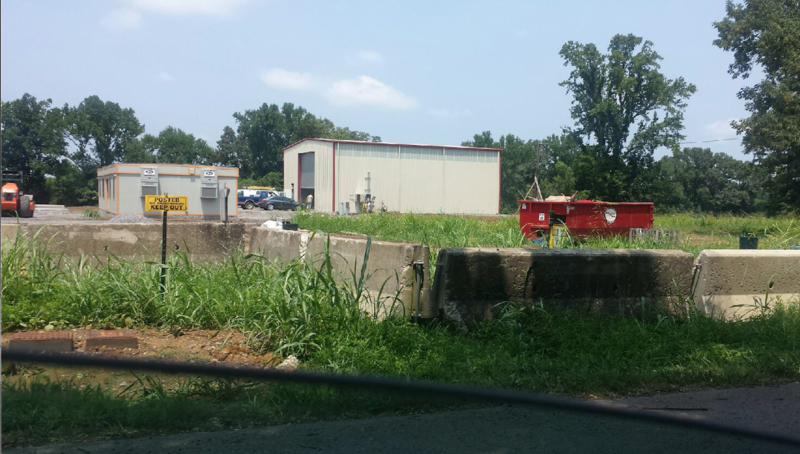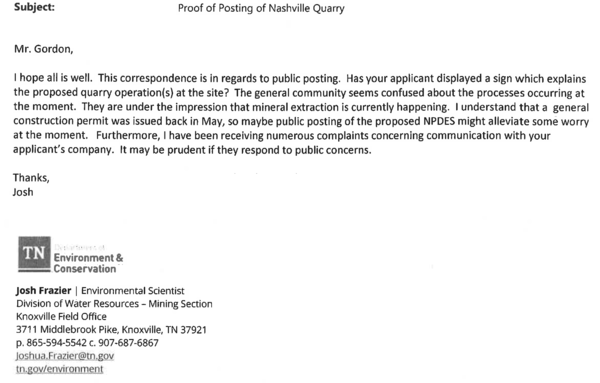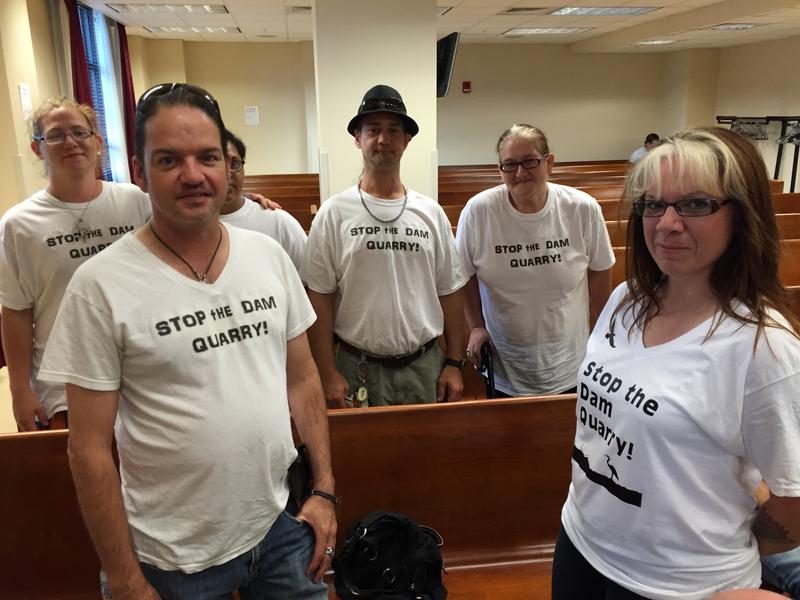
State government inspectors — not the Metro Council — will decide whether a limestone quarry can begin operations on 141 acres in Old Hickory.
A council proposal that would have set strict regulations, essentially blocking the quarry, became mired in bureaucracy and did not advance Tuesday night. That leaves the measure in limbo as the council winds down its business this month, with Thursday’s election to replace many members.
But the Tennessee Department of Environment and Conservation (TDEC) is in the middle of its own rigorous review of the proposed quarry, with a site visit scheduled for this week. The Army Corps of Engineers is also involved.
The high level of scrutiny is typical for a rock blasting operation that includes future plans for asphalt and concrete processing on the site.
It’s the chosen location that concerned neighbors and Councilman Larry Hagar, who tried to block the quarry. His idea was to mandate a buffer zone to separate quarries from homes and parks, and the distances he suggested would have made the quarry impossible at 771 Burnett Road.
The site in Hadley Bend of the Cumberland River is within a few hundred feet of homes, a Metro park that has a popular beach, boat ramp and fishing area, the Old Hickory Dam and the historical Gleaves family cemetery. Hagar said many also worry about disrupting bald eagles that they say nest nearby.
“The overwhelming majority feel that being that close to that park back there, and that dam and the wildlife situated there — those are the primary reasons for opposition,” Hagar said. “The biggest issue to me of a great concern is not only the residents but also the safety of the people downstream from the Old Hickory Dam as well.”
State finds ‘deficiencies’
While Hagar’s idea would have blocked the quarry, it now falls to TDEC to consider the application filed this summer by Industrial Land Developers.
Already, that review has turned up some “deficiencies,” according to records reviewed by Nashville Public Radio.

The agency wants to be sure that eagles won’t be endangered and that blasting won’t impact a nearby dam. A TDEC environmental scientist also requested a review of what potentially dangerous chemicals were left behind on the land, which housed a gun powder plant in the early 1900s and then biological sludge from a DuPont plant.
In one letter last month, the state told the company to post better signage about the proposal (see above) and to provide new diagrams, an environmental assessment and a modified five-year plan.
TDEC also told the company of “numerous complaints concerning communication with your applicant’s company. It may be prudent if they respond to public concerns.”
The so-called “deficiencies” were mostly to be expected in what can be an incremental, six-month process, said John Gordon, a Wiser Consultants engineer working on the project.
“The concerns that have come up, as far as I’m aware of, are some of the same ones that came up in planning the project,” Gordon said.
He said the company wouldn’t have chosen the location without doing its own in-depth research that made leaders confident the land was not only ideal for a quarry, but also one of few such properties in the county.
“It fits very well within the constraints from an engineering perspective and also from Metro zoning,” Gordon said.
The company’s two environmental assessments, filed last week, found some elevated levels of arsenic, iron, and manganese, but not to levels considered “hazardous” or that would trigger further regulatory action.
Gordon said the company is not aware of any endangered wildlife nearby. And he said that while the Army Corps of Engineers regulates wetlands and oversees the nearby dam, the company’s plans might not ultimately trigger any specific permitting process.

Next steps
That means focus will turn to TDEC’s review of the application, which could take several more weeks. A public comment period and a public hearing will likely take place, said department spokesman Eric Ward.
“The proposed activity would be extensively evaluated, all the way from the application itself, to an on-site evaluation,” he said. “We are still very much in the early stages of the permitting process.”
Hagar’s council proposal would only have been voted on Tuesday if his peers had agreed to suspend the council’s normal procedures to allow a public comment hearing. Despite a crowd of about 60 opponents who wanted to speak, four council members resisted the move and the measure was quickly tabled.
Hagar said he would tell his constituents “it’s not over.”


